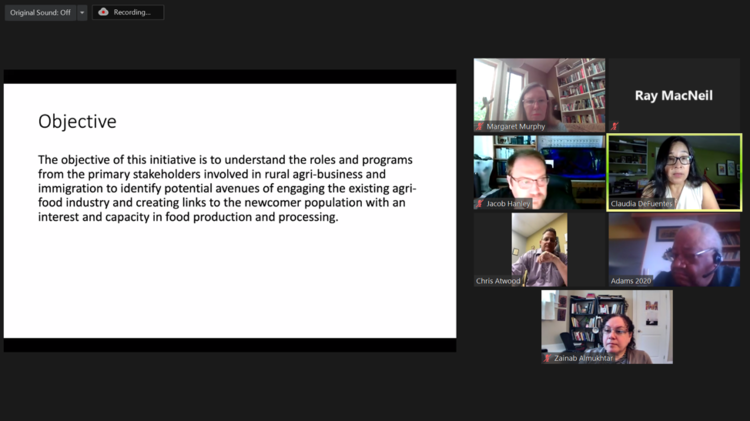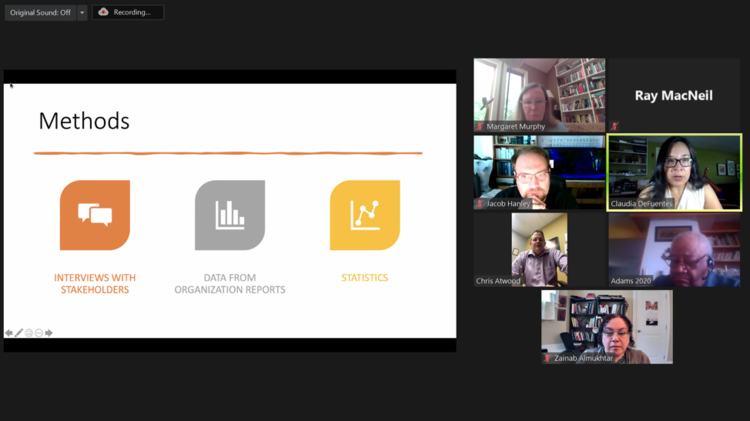On April 20, the Sobey School of Business Community Revitalization & Prosperity Network launched a conversation series with the Nova Scotia-based Black Business Initiative (BBI), the longest serving Black business development initiative in Canada.
The first conversation, called Black Business Initiatives: 25 Years & Beyond, featured BBI CEO Dr. Rustum Southwell, Cynthia Dorrington, President of Vale & Associates Human Resource Management and Consulting Inc. and Dr. Harvi Millar, Professor of Operations Management at the Sobey School of Business.
The panellists spoke to Dr. Harjeet Bhabra, Dean of the Sobey School, about the history of Black-owned businesses in Nova Scotia and the work that remains to be done to remove barriers to success, particularly in the aftermath of the COVID-19 pandemic.
In his remarks, Dr. Southwell noted that Black-owned businesses have contributed over a billion dollars to the Nova Scotia economy in the 25 years since BBI was founded. Innovations by Black entrepreneurs in Nova Scotia include the world-class medical company BioMedica Diagnostics of Windsor (founded by Abdullah Kirumira) and SureShot Solutions of Lower Sackville, which provides highly specialized equipment for many of the world’s most successful coffee chains (founded by CEO Michael Duck).
Despite a long history of business success and over 200 years of African Nova Scotians in the province, Ms. Dorrington noted that due to systemic barriers, it can be difficult for Black entrepreneurs and small business owners to access necessary financing, coaching, advisory services and many of the other keys to business success. As a result, these businesses are often prevented from achieving their full potential. “To grow beyond a certain level, you must work on your business, not just in your business,” she said.
Black entrepreneurs are also often shut out of certain sectors, like aerospace and information technology, due to systemic barriers. Dorrington said we need to “think big… and provide mentorship and coaching to help business owners see the next big opportunities.”
Dr. Harvi Millar presented recent research into how Black-owned businesses have been affected by the COVID-19 pandemic, noting that surveyed businesses are facing challenges including cash flow, reductions in operating capacity, declining customer bases and temporary or permanent business closures.
The research shows that in addition to the challenges presented by the COVID-19 pandemic, Black business owners face barriers including racial bias, lack of scale, insufficient access to wealth and collateral, lack of peer-to-peer support networks and limited market access.
Dorrington noted that these barriers are often built into unfair and outdated systems that we must now work to redesign. “These systems didn't have all voices at the table when they were designed,” she said. “This is the time. If you're going to address it, you have to look at the system and really assess what is working and what is not. We must take the initiative and get rid of what isn't working.”
Dr. Southwell noted that “no Black person – no matter how wealthy or successful in business – hasn’t felt marginalized at some point in their life.”
To lift up Black businesses, Dorrington said we must acknowledge systemic racism as a first step. “We must come together to navigate. Until you face those barriers you don't see them. People who have navigated them in the past, we can put our heads together but speak with one voice.”
The next conversation, to be scheduled shortly, will explore Barriers to Doing Business for Black Entrepreneurs: Access to Capital Market. Visit the Community Revitalization & Prosperity Network to learn more.















